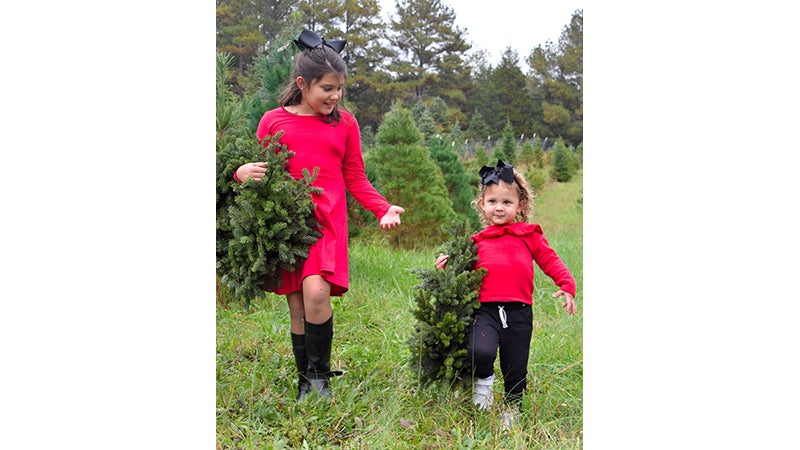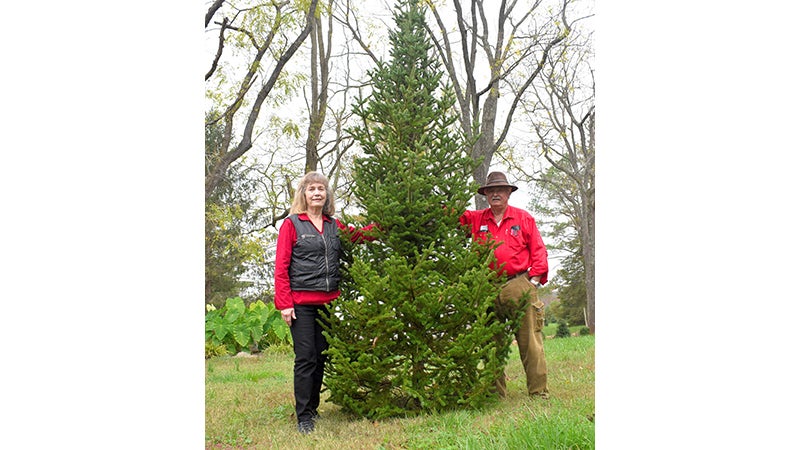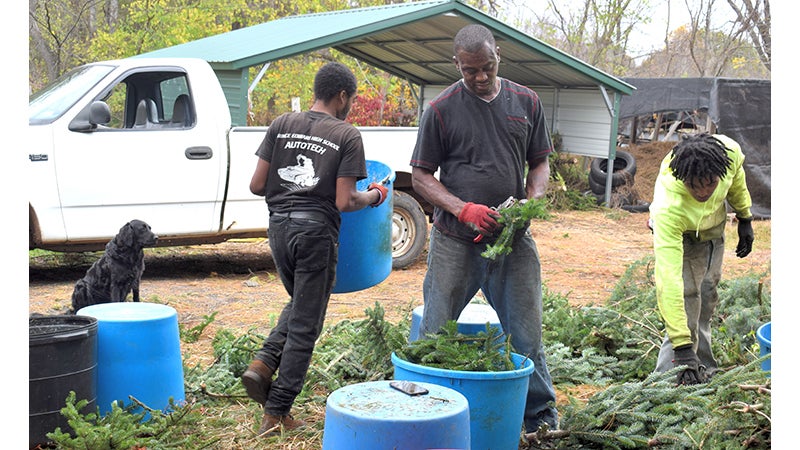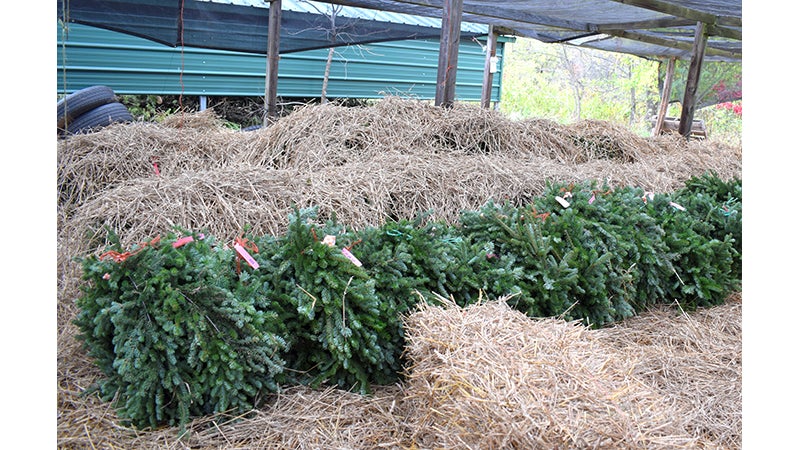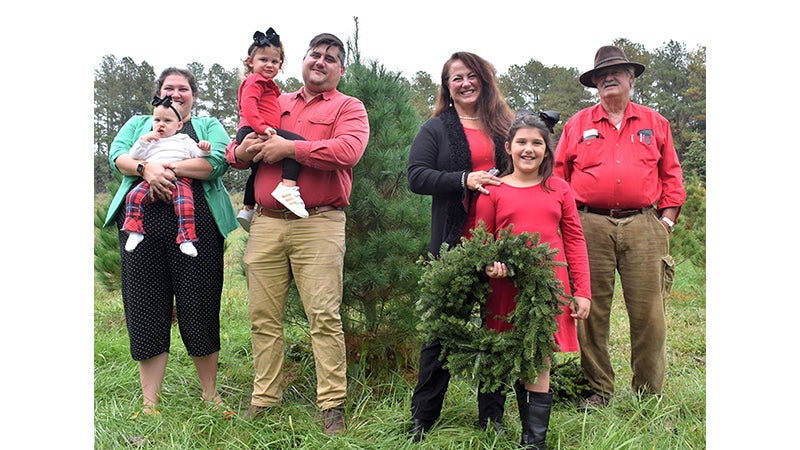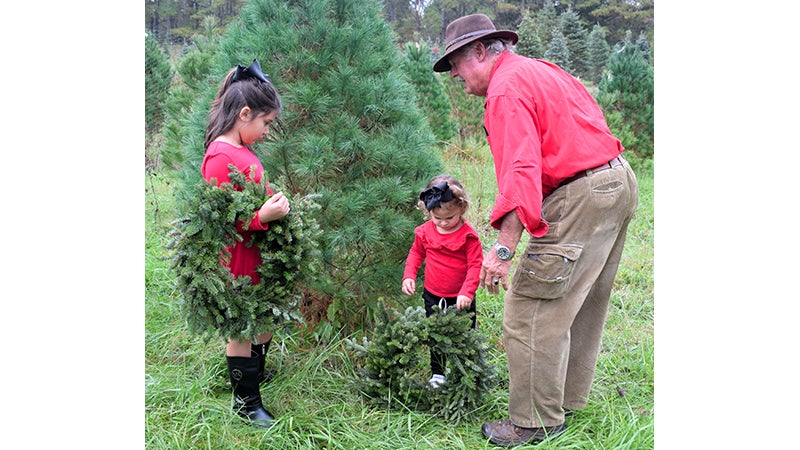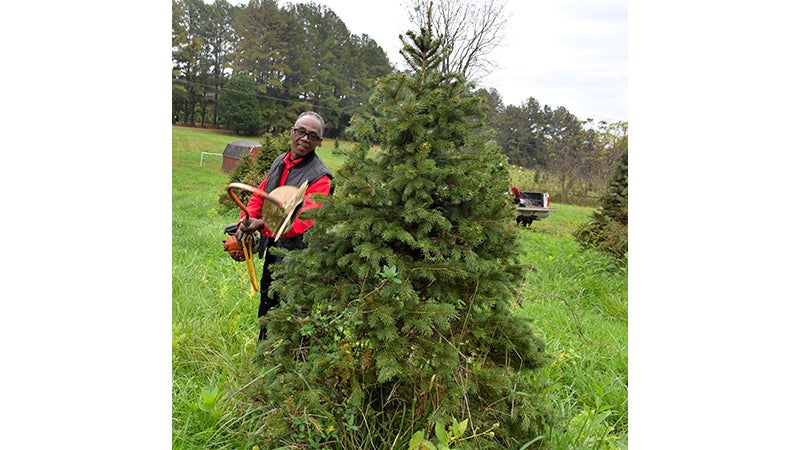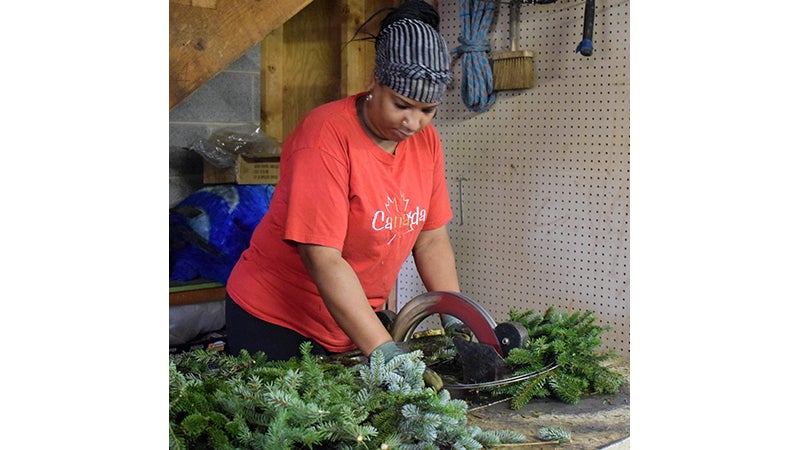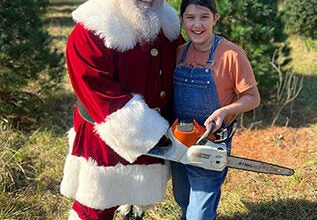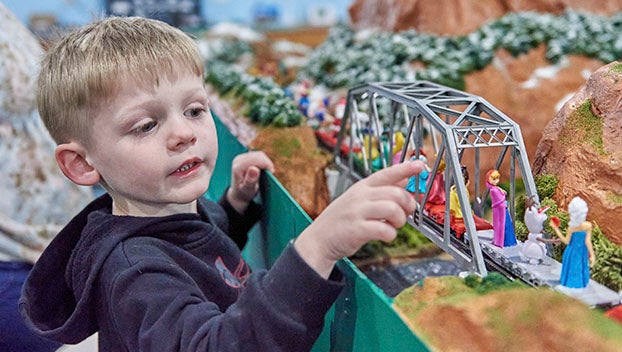J & J Treeland bringing the holidays home
Published 4:49 pm Friday, December 18, 2020
|
Getting your Trinity Audio player ready...
|
Story and photos by Marge Swayne
J & J Treeland isn’t near the North Pole, but Santa would feel right at home there. At John Young’s tree farm in Prospect, every day of the year is a preparation for Christmas.
Young knows the business well — he’s been growing trees for almost half a century.
“It started with my brother Freddie and his friend, Jim Bowen, who was a forester,” Young recalled. “They got me involved because I had the land.”
The fledgling tree business started small, and like the trees, it grew.
Young took control of the business after his brother Freddie passed away and Bowen took a position with the Department of Forestry in Charlottesville.
Over time the business expanded, and so did the workload.
“It got to where weekends weren’t cutting it,” Young related. “During our heyday we had 5,000 white pines cut and waiting to be shipped out by tractor trailer. Somebody had to be looking after the trees all the time.”
Like Santa, the local tree farmer decided it was time to find some “elves.”
His current staff of farm workers carry out a variety of year-round tasks, from maintaining fields and planting seedlings to making wreaths.
“It’s a seasonal business,” Young commented.
Seasonal, in this case, refers to all four seasons.
“In the springtime we plant trees,” he explained. “During June, July, and August we shear them. In October and November, we mow fields and tag the trees.”
Since he went into business, Young has depended on Lester Williams, his right-hand man.
“Lester came to work for me when he was 18,” Young said.
A good portion of the tree farm work is done during the hottest time of the year. Nary a snowflake’s in sight when trees are sheared, a process that gives them that traditional Christmas tree shape. It’s normally done with a machete-like knife, but Young prefers a weed eater he converted by attaching a blade. No matter the technique, it’s tedious work.
“It’s a lot like working tobacco,” he explained. “It’s hard work, especially after eight or nine hours. And the bigger the tree, the more you have to stretch up to shear it.”
By the first week in November, Young’s workers are getting ready for the holiday season. Young’s seasonal workers like the job and tend to come back year after year.
“Seven years,” Yesnia Alexandro commented on her tenure as wreath maker.
Latonya Ford and Marlie McMahan have each worked on the wreath-making assembly line for two years.
Finished wreaths are stored under straw in another outbuilding.
“Our wreaths stay green until March,” Young affirmed. “We use a preservative that keeps them fresh.”
A recent problem in the tree industry, Young explained, is a shortage of white pine material used for wreaths and garlands.
“They used to grow white pines up in the mountains,” he related. “White Pines used to be the most popular, but now it’s Fraser Firs. It’s all about what’s in fashion.”
Then there’s Mother Nature to contend with.
“People don’t understand the forces of nature,” Young commented. “This year in May my seedlings had just put out their new growth when a late frost hit them. The trees never grew at all. That put us back a whole year. If you have a dry summer, the trees suffer some more. Then there are animals — they can do a lot of damage.”
Deer, he added, are the main problem.
“They come along and bite the buds off the end of every branch,” he said.
The local tree farmer has tried deer repellents but without much success. Fencing is the only solution, and that’s difficult with acres of trees to protect.
Young, who’s 82, explained tree farmers like himself are aging out of the industry.
“Many farmers who grow trees are getting too old to do it anymore,” he said. “That’s created a shortage of trees.”
He sees finding good workers as another part of the problem.
“Young people today don’t know anything about the outdoors,” he lamented. “Do you see many young people these days walk outside at night, look up at the heavens and say, ‘Isn’t that beautiful?’ I don’t think so.”
Young is pleased that the younger members of his family are an exception to the rule.
J & J Treeland has always been a family farm.
For many years, Young’s daughter, Justine, went to the farmers market in Colonial Williamsburg and later Smithfield to sell trees and wreaths.
“For years — probably 20 — we provided all the roping and wreaths at Colonial Williamsburg,” Justine added with a note of pride.
Now there are more generations of the Young family helping out with annual Christmas tree sales. John Young’s granddaughter and her husband, Sarah and Nat Kott, work the sales booth, while great-granddaughter Audrey, age 8, runs errands and helps entertain children while their parents search for the perfect tree.
“Audrey’s been clamoring around this tree farm ever since she could get outside,” Young added. “Like me, she enjoys being outdoors.”
Young believes visiting a working farm is an educational experience for children.
“I think it’s just good for children to get out and see these things,” he said. “Half of them don’t know anything about how things grow.”
Young, who lived on a farm in Pennsylvania when he was a boy and spent summers at his uncle’s farm in North Carolina, believes a successful farmer has to be observant.
“So much of farming is based on observation and making conclusions,” he added. “To be a good farmer you need to be a good observer of nature.”
Observing this year’s trends, Young predicts this holiday season to be a good one for the tree industry.
“It’s going to be a huge year for decorating, because people can’t go anywhere,” he said. “Because they’re staying at home, it’s going to be a good year for us.”
When it comes to Christmas, Young believes in making it real.
“Putting up a real Christmas tree is like watching a ball game,” he said. “You might see the game better on TV, but there’s nothing like being in the ball park yourself. That’s what makes it real.”


